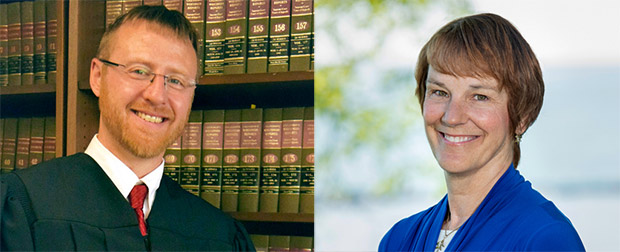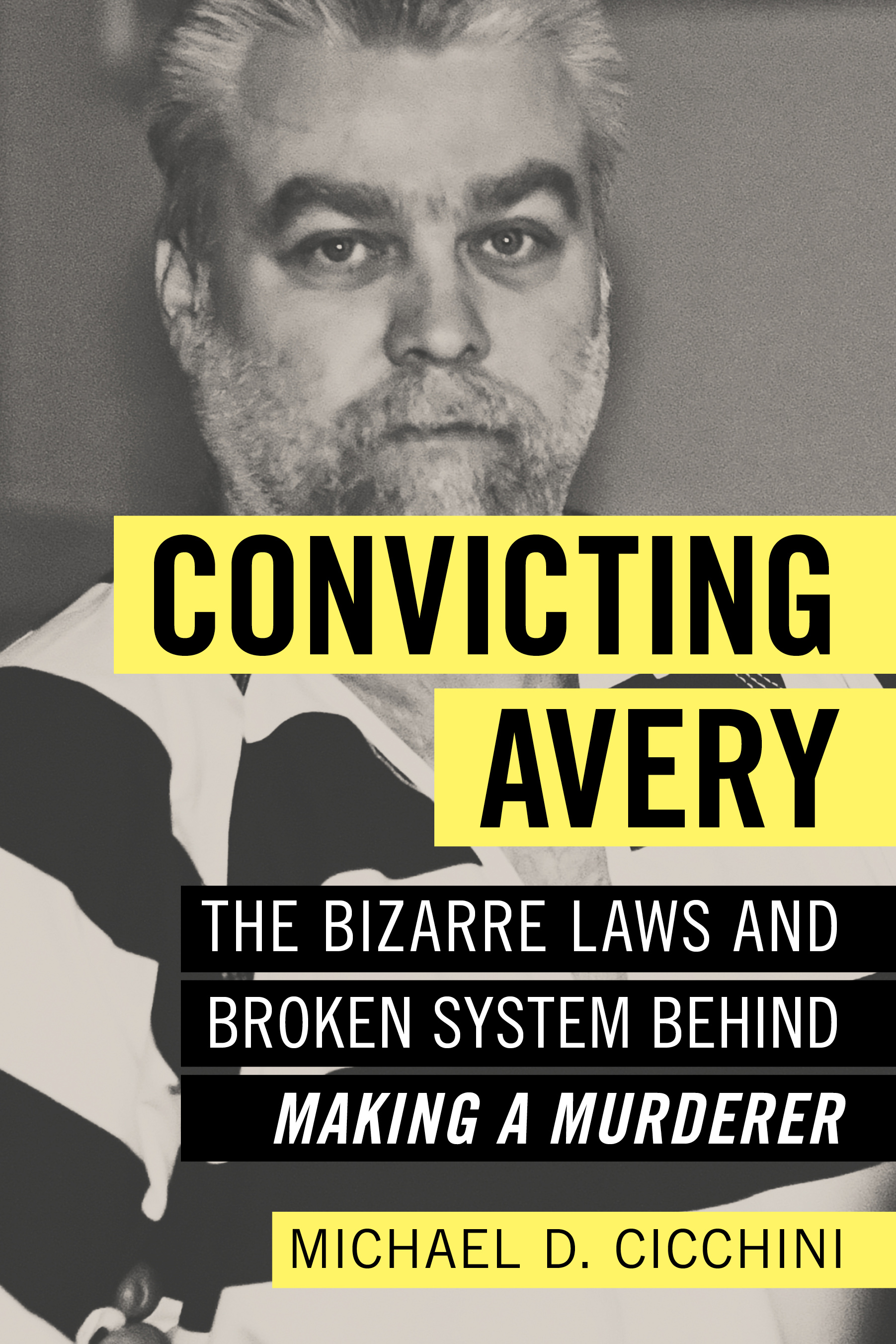Associate’s departure leads to questions about fee payment
By: dmc-admin//January 22, 2007//
 |
| Nate Cade
|
Associates. You can’t live without them. And sometimes you can’t live with them.
A local personal injury firm discovered the hard way that associates can be a pain in the you know what. And the subsequent published decision shows what happens when people fight over money.
The law firm of Cannon & Dunphy moved to intervene in a series of at least six cases that a former associate, James Gende, handled and settled after he left the law firm. After Gende left Cannon & Dunphy, he had several former firm clients leave and go with him. He also was able to settle the cases rather quickly.
In the majority of the cases, Cannon & Dunphy moved to intervene in its former clients’ cases, even though the cases were settled and closed, in order to protect its “interest.” The various trial courts all found in favor of the former employer. In a published decision in August last year, the District I Court of Appeals affirmed. See Markwardt v. Zurich American Insurance Company, 2006 WI App 200.
Separation Issues
This decision does not provide the Wisconsin practitioner with any great legal insight or knowledge. Nor does the opinion identify who is the antagonist and who is the hero. But it does highlight the need for law firms to protect themselves when an associate, or partner, departs employment with the firm.
Here, there are a number of similar case disputes between Gende and his former firm. I do not know the facts of the cases or the genesis of the dispute, so I cannot offer my opinionated thoughts. However, I do know that this decision is a valuable lesson for all attorneys to pay heed, especially as we head into the new year, and for many of us, the time when compensation decisions are made, and colleagues, especially associates, leave after those decisions are made.
The Markwardt case is a perfect example of how the square peg of the law does not fit within the round hole of business. Wisconsin practitioners should take heed that the Rules of Professional Responsibility often trump any business considerations.
So, for example, in Markwardt, one of the issues was who had control of the files and who was to receive the fee?
Obviously the fee did not become an issue until Gende won the cases that he had, and his former employer wanted to recoup the costs advanced and the fees owed.
From a pure contractual standpoint, the court of appeals got it right. Gende cut a deal with Cannon & Dunphy, and he reneged on that deal. However, I think the Markwardt case got one issue wrong, or at least it failed to address an important matter.
A Matter of Responsibility
In particular, the Rules of Professional Responsibility do not allow lawyers not in the same firm to share a fee unless there is “joint responsibility” for the representation. See SCR 20:1.5(e).
Before you jump down my throat, I am aware that there is case law indicating that a departing lawyer can make a legal arrangement with her former firm for fees received for work already performed. However, this is different, and the court of appeals should take note. The difference here is that Gende did work on these cases after he left Cannon & Dunphy, but still was obligated to pay that firm a percentage of the future recovery, and the Markwardt decision does not indicate that the two combatants ever sat down and indicated what the “joint responsibility” between them would have been.
For example, it likely would pass the OLR smell test for Cannon & Dunphy to have declared in a written agreement that because it had “performed” much of the work before Gende left, it had met its burden of “joint responsibility” and that Gende would have responsibility for the work performed after he left. Markwardt does not indicate whether this discussion ever took place.
Client Consent
In addition, there is no mention in the decision that the clients Gende took with him ever “consented in writing” to the joint representation. Rule 1.5(e) requires a written agreement from the client to a joint representation, or alternatively, that the division of fees be in proportion to the services performed.
While many of the Rules of Professional Responsibility don’t make sense (at least on the surface), this one does. The Joint Responsibility Rule is designed to prevent one set of lawyers from receiving a fee, but having no responsibility for the case should something go wrong. In concept, this is a very easy rule to comply with. In theory, it is a lot more difficult.
For example, if two lawyers who are not in the same firm decide that they are to jointly work on a matter together, several things must occur.
First, the client must consent in writing, or alternatively, the fee is in proportion to work performed. This is a non-starter. Without a signed writing by the client or proportionate distribution, it is a violation of the Rule and likely void as to at least one set of lawyers (i.e. those who don’t have the settlement monies sitting in their trust account). Second, the client must consent to the joint representation. Third, the fee mus
t be “reasonable.”
It is important to note that the Joint Responsibility Rule is not without its problems. For example, if one lawyer learns that another lawyer has committed an error that constitutes malpractice or has done something to harm the client or the client’s case, that lawyer has a responsibility to report the other lawyer and/or to give the client notice. See SCR 20:5.1. Under Rule 5.1, partners in a law firm owe certain duties, including the duty ensure that their other partners, associates and staff are doing what they need to do both from an ethical standpoint as well as the best interests of the client.
Handling Harm
| Related Article
|
||
If a partner in a firm learns that someone has committed harm to the client, that partner owes a duty to the client to report the problem, not bury it. The same is true for parties who have joint responsibility for the representation. As far as the Rules of Professional Responsibility are concerned, lawyers not in the same firm are treated as if they are partners and they owe duties to each other and more importantly they owe duties to the client.
So what is the lesson to be learned from all of this?
Well the first lesson to learn is that when a lawyer takes with him, or her, a case, there needs to be a discussion both with the departing lawyer and the client as to how the fees will be paid and who is responsible for which aspect of the case. The second lesson is that you should be careful with whom you enter into “joint responsibility.” Finally, take care of your associates. Otherwise, they may become your nemeses.
Legal News
- Former law enforcement praise state’s response brief in Steven Avery case
- Eric Toney announces re-election bid for Fond du Lac County District Attorney
- Former Wisconsin Democratic Rep. Peter Barca announces new bid for Congress
- Republicans file lawsuit challenging Evers’s partial vetoes to literacy bill
- More human remains believed those of missing woman wash up on Milwaukee Co. beach
- Vice President Harris returning to Wisconsin for third visit this year
- Wisconsin joins Feds, dozens of states to hold airlines accountable for bad behavior
- Trump ahead of Biden in new Marquette poll
- Bankruptcy court approves Milwaukee Marriott Downtown ‘business as usual’ motion
- New Crime Gun Intelligence Center to launch in Chicago
- Arrest warrant proposed for Minocqua Brewing owner who filed Lawsuit against Town of Minocqua
- Wisconsin Supreme Court justices question how much power Legislature should have
WLJ People
- Power 30 Personal Injury Attorneys – Russell Nicolet
- Power 30 Personal Injury Attorneys – Benjamin Nicolet
- Power 30 Personal Injury Attorneys – Dustin T. Woehl
- Power 30 Personal Injury Attorneys – Katherine Metzger
- Power 30 Personal Injury Attorneys – Joseph Ryan
- Power 30 Personal Injury Attorneys – James M. Ryan
- Power 30 Personal Injury Attorneys – Dana Wachs
- Power 30 Personal Injury Attorneys – Mark L. Thomsen
- Power 30 Personal Injury Attorneys – Matthew Lein
- Power 30 Personal Injury Attorneys – Jeffrey A. Pitman
- Power 30 Personal Injury Attorneys – William Pemberton
- Power 30 Personal Injury Attorneys – Howard S. Sicula









